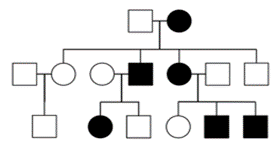#Question id: 130
#Unit 1. Molecules and their Interaction Relevant to Biology
An amino acid with two chiral carbon atoms
#Question id: 131
#Unit 1. Molecules and their Interaction Relevant to Biology
The RS system of nomenclature describes
#Question id: 132
#Unit 1. Molecules and their Interaction Relevant to Biology
Proline is distinct among the 20 commonly found amino acids because
#Question id: 133
#Unit 1. Molecules and their Interaction Relevant to Biology
Tyrosine and tryptophan are less hydrophobic than phenylalanine because
#Question id: 134
#Unit 1. Molecules and their Interaction Relevant to Biology
Ultraviolet (UV) light can be used to estimate protein solution concentrations because
#Question id: 135
#Unit 1. Molecules and their Interaction Relevant to Biology
Concentrations of some proteins cannot be estimated by UV spectrophotometry because they are

